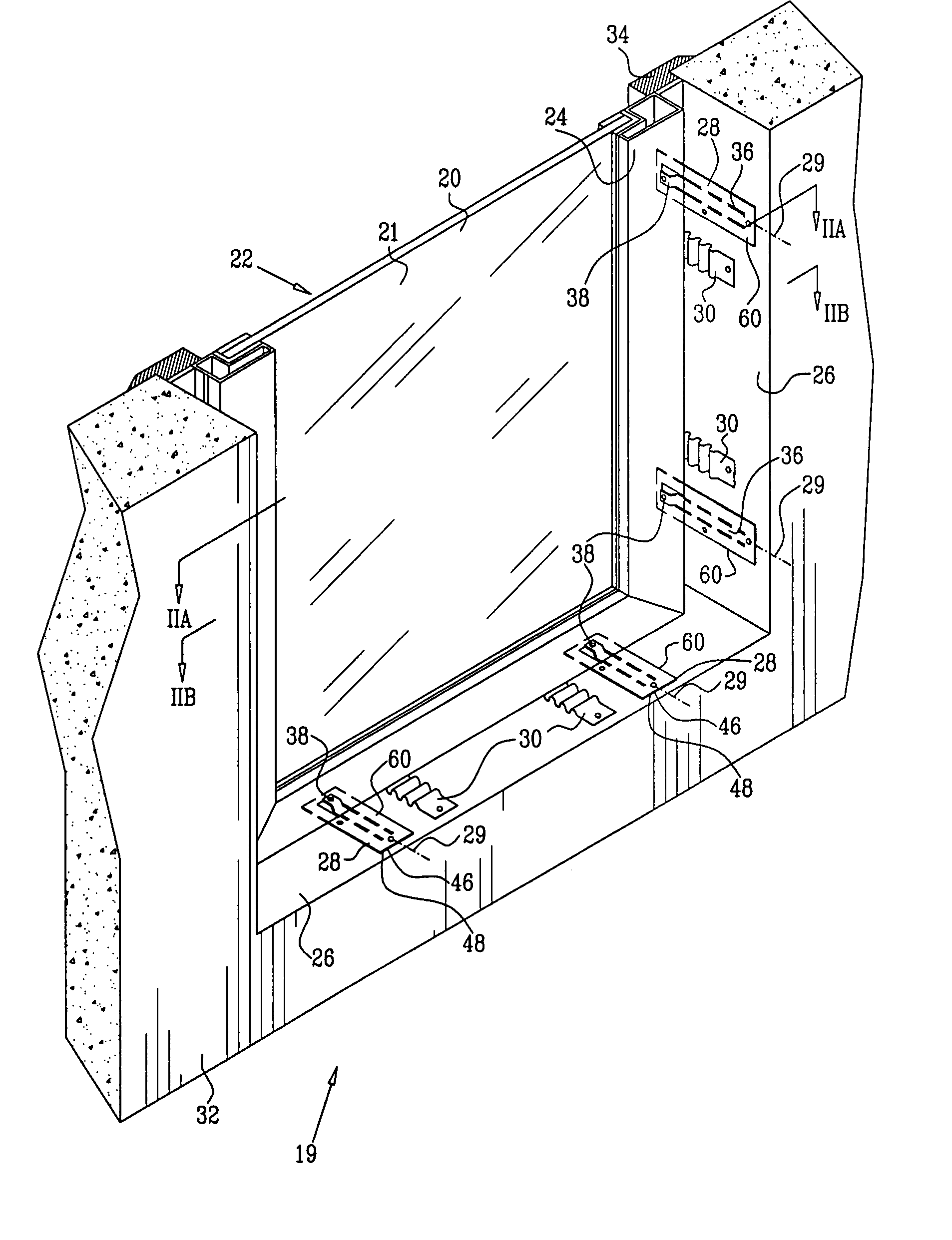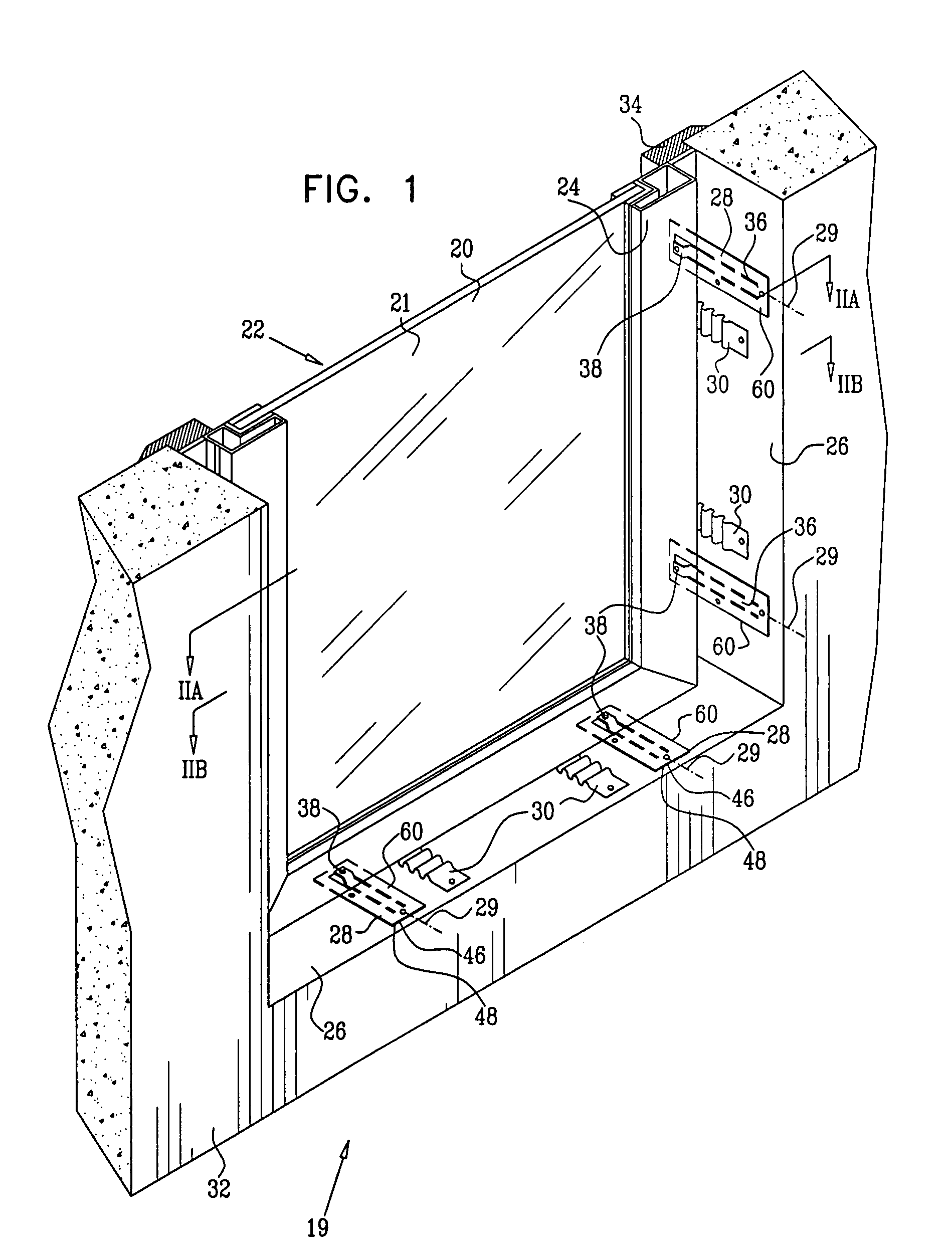Blast mitigation system
- Summary
- Abstract
- Description
- Claims
- Application Information
AI Technical Summary
Benefits of technology
Problems solved by technology
Method used
Image
Examples
Embodiment Construction
[0042] Reference is now made to FIG. 1, which is a schematic isometric drawing of a window mounting assembly 19, according to an embodiment of the present invention. Reference is also made to FIGS. 2A and 2B, which are cross-sections of FIG. 1. FIGS. 1, 2A, and 2B, show a window 20 mounted in an opening 22 of a structure 32. In the specification and in the claims, the term window is also assumed to comprise a door, curtain-wall, and / or other fenestration product which may be mounted in an opening of a structure. Window 20 comprises a retaining frame 24, typically formed from extruded aluminum, and for clarity a top portion of frame 24 is not shown in the figure. Window 20 has internal material 21, typically glazing, although it will be appreciated that the internal material may be formed from other materials suitable for mounting within frame 24, such as plastic or metal sheet. Internal material 21 is typically laminated, or has another form of protection known in the art, so that i...
PUM
 Login to View More
Login to View More Abstract
Description
Claims
Application Information
 Login to View More
Login to View More - R&D
- Intellectual Property
- Life Sciences
- Materials
- Tech Scout
- Unparalleled Data Quality
- Higher Quality Content
- 60% Fewer Hallucinations
Browse by: Latest US Patents, China's latest patents, Technical Efficacy Thesaurus, Application Domain, Technology Topic, Popular Technical Reports.
© 2025 PatSnap. All rights reserved.Legal|Privacy policy|Modern Slavery Act Transparency Statement|Sitemap|About US| Contact US: help@patsnap.com



